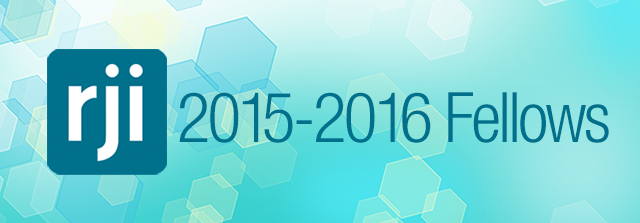
Tracy Clark’s take on 15 news aggregation apps: Is your go-to app on this list?
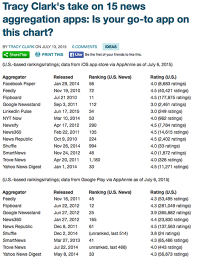
The news customization market is still very early and fragmented yet extremely promising. In the past five years about 20 serious players have emerged filling niche areas of this market, with some acquisitions already occurring (Pulse by LinkedIn in 2013, Summly by Yahoo in 2013, Zite by Flipboard in 2014). Big players Facebook and Apple just made huge announcements in this space with Facebook Instant Articles and Apple News App. Others, like Amazon, have made media acquisitions but have little to show for it — yet.
As successful venture capitalist Marc Andreessen states, “I am more bullish about the future of the news industry over the next 20 years than almost anyone I know. You are going to see it grow 10X to 100X from where it is today. That is my starting point for any discussion about the future of journalism.”
Let me preface this article by stating that I am not the normal news connoisseur — I have 30 news aggregation apps on my phone and receive 10 daily email newsletters, yet don’t pay for any newspaper or paywall (rationale on that here). I am obsessed with this space and love watching the various offerings and observing their pros and cons as I continue working on my own customization platform, Reportory. We just launched our own iOS app that I welcome feedback on!
Here is my take on 15 news aggregation apps in the market today. If there are others I’m missing please let me know in the comments. What is your go-to choice?
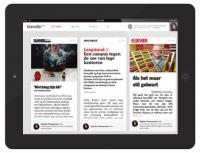
Blendle
In April 2014 Alexander Klöpping and Marten Blankesteijn launched Blendle in the Netherlands as “the iTunes of journalism.” They charge approximately 20 cents per article (the price is set by the publisher so it varies widely), with 70 percent of revenue going to the publisher and 30 percent staying with Blendle. If readers dislike an article they can receive an instant refund. In October 2014 The New York Times and Axel Springer announced a $3.8 million investment in the company. In March The New York Times, The Washington Post and The Wall Street Journal signed a content partnership with the site. As of April, Blendle reported 250,000 users, most of whom are under 35 years old. In June, Blendle announced its move into Germany by signing on all German publishers — 18 dailies and 15 weeklies. Blendle has an informal rule that they will only enter a country when they have signed on two-thirds of publishers in that country.
According to Klöpping, “Blendle is a social network and a search engine. Users can follow other users, and read the stories they recommend. And they can set alerts, to find articles about topics they consider interesting.”
My take: Since this is only available in the Netherlands and shortly in Germany, I can only base my opinion on what I have read about them over the past two years. I strongly agree with their notion of breaking away from siloed paywalls and pulling all disparate content into one interface, which users can then unbundle and rebundle to their heart’s content. I also agree there will always be a place for different payment models such as what they are doing with pay-per-article, what I am doing at Reportory with tiered usage, and what Spotify, NextIssue, Netflix and others offer with one monthly price for unlimited usage.
What I question is the refund notion. That gets really tricky to put control in the users’ hands as to what they deem worthy enough to pay for — and if they will be honest enough to pay their fair share. In a recent post they note that their refunds averaged 5 percent so this bodes extremely well for them. I also think it’s best to make your users think about the payment process as infrequently as possible, thus a simple automated monthly renewal is normal practice. However, it appears as though this micro-payments model works best for Generation Y. Even at 20 cents per article, that adds up fairly quickly. That would make a normal newspaper of 20 articles each day cost $4, far more than the original print or online paywall price. I don’t see myself paying $4 to have five relevant articles each from four different sources in one day. So obviously this payment model works better for the snackers out there who only want a few selective pieces versus the more hungry readers who would blow through their budget in no time. I am extremely anxious to see if they can sign up two-thirds of U.S. publishers to enter our country. Only time will tell.

Circa
(On June 24, Circa was “put on indefinite hiatus” after not securing an additional round of funding or finding a buyer once it was put up for sale. I decided to still cover their story since it was a valiant attempt at news aggregation that will be an example for years to come.)
Founded in 2011 and launched in October 2012, Circa focused on “atomizing, not summarizing” the news to provide “the President’s Daily Brief for the rest of us.”
“It’s true, our content is concise, to the point and we provide links back to our sources,” they wrote in 2014. “But Circa stories aren’t summaries. Indeed, stories can never be summaries – and we believe in stories. Why stories at all? Why not just write a summary of each news article? We feel it would be deficient. And we use that word carefully. It’s not that summaries would be bad – but ‘deficient’ (“lacking in some necessary quality or element”).”
The executive team at Circa consisted of co-founder and CEO Matt Galligan, co-founder and CTO Arsenio Santos, editor-in-chief Anthony De Rosa, and co-founder (and initially funded by) Ben Huh.
Each day a Circa reader could find 10 to 20 news stories on their homepage. These stories had been chosen and “atomized” manually by Circa editors. Within each of its 13 pre-defined topical areas (such as health, sports, technology and world news) a user could expect to find a handful of articles each day.
For more than two years Circa was a mobile-only offering. In February they moved to display their articles online, coincidentally within the same month that Flipboard announced their Web addition to their mobile-first approach.
“Because the Web is an open platform that’s extremely easy to develop for, we’ll be able to try new features and capabilities before we spend the time to bring them to the app,” wrote Galligan in his explainer post for the move to Web.
Circa did not disclose its usage numbers, but in June it was ranked 69 of news apps in the Apple Store according to App Annie. It had raised $5 million to-date but in April announced it could not secure a new round of funding and was putting itself up for sale. As mentioned above, on June 24 they closed down the site. “We have now reached a point where we’re no longer able to continue news production as-is,” Galligan wrote.
My take: I really liked the user experience (UX) of integrating various data points, quotes and graphics to tell a rich multimedia story (similar to Summly now used in Yahoo News Digest). What made Circa superior to Yahoo News Digest, in my opinion, is they continually added to their stories that I could subscribe to for updates. I didn’t like, however, that article topics were chosen for me by manual editors. For example, each day they provided me with only a handful of technology stories but many were still irrelevant. I would have liked to have given them keywords to continue refining which articles within each section were displayed to me. And I would argue (although I love the consumable nature) that most readers wanted more content than what Circa editors were able to provide — thus the need for a combination of manual and automated aggregation.

Facebook Paper
Facebook was late to the game, launching Facebook Paper on February 3, 2014, several years after Flipboard, Circa and others.
“On launch day, it was the No. 1 social networking app, and the No. 1 app in the U.S. iTunes Store. Now [two months later], it’s fallen to No. 76 in social and No. 965 in the U.S. as of April 1, according to App Annie,” wrote Paul Szoldra of Business Insider. A year later, the app has fallen out of the overall social and U.S. rankings, and listed as No. 63 for U.S. news.
At launch, Facebook announced content partnerships with 40 providers aggregated into 20 topical categories using uncommon news category taxonomies such as Home, LOL, Glow, Pride, Equalize and Cute. There is absolutely no customization of topics or news sources, and initially the stream was limitless. (I stopped counting at 50.) Now they seem to limit each section to approximately 10 article previews that link back to the original publisher’s site. But, again, I can’t choose which publications to display in these pre-set streams.
Facebook Paper team members include Kimon Tsinteris, Mike Matas, Ben Cunningham, Scott Goodson, Grant Paul and Michael Reckhow.
My take: It appears to me this app was a flop as most of the team members listed above now list that they work on both Facebook Paper and Facebook’s newest news initiative, Facebook Instant Articles. I think several aspects of the app prevented its success: They don’t let users choose their publishers, the categorical sections are extremely off-the-wall and incomplete, and they just link me across the Web back to original sites. This latter issue is one of my biggest complaints of RSS-based aggregation sites. I want one reading experience within one UX saving me from visiting siloed sites and paywalls.
Bring it all to me in one interface! It appears they are starting to do exactly this with Instant Articles, now doing pilot tests with nine publishers including The New York Times that is publishing approximately 30 articles a day. If they can blend the initial concept of Facebook Paper with an extensive overhaul and Instant Articles, they are definitely on to something. As I mentioned in my earlier assessment on this market, Facebook is the perfect place to find new newsreaders who aren’t loyal enough to pay for a subscription or paywall and otherwise wouldn’t source out the news on their own.
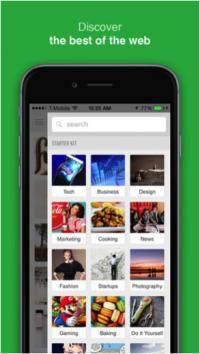
Feedly
Per Wikipedia: “In November 2006, Edwin Khodabakchian co-founded DevHD. The company sought to create a platform that uses RSS feeds, online storage, and social media integration to connect users with the information they find interesting. DevHD’s first project, Streets, which aggregates updates from a variety of online sources, is the basis of Feedly. Feedly, which was optimized for RSS feeds, was first released on June 15, 2008. Originally called Feeddo, Feedly was first released as a Web extension before moving onto mobile platforms.”
Feedly’s popularity skyrocketed when Google Reader shutdown in 2013. Eighty percent of Google Reader’s users transferred over to Feedly and the startup’s user base grew about 15 times to 15 million users.
In 2014, Business Insider reported, “40 million websites connect their content to Feedly and 2,000 new articles are brought into the reader per second.”
Feedly uses a freemium model with an upcharge to Feedly Pro to access additional share, save and support features.
Khodabakchian told Business Insider: “We launched Feedly Pro priced at $5 per month or $45 per year with Lifetime editions of $99 for the first 5,000 backers. When we put it out there we had no idea how many would sell. We turned it on at 11 p.m., went back to sleep, woke up at 6 a.m. for the European wave and by then it raised $500,000.” As of February, Feedly Pro boasted 50,000 paying customers.
Feedly has an extremely loyal userbase: Mobile users spend on average 20 minutes per session, desktop users spend on average 55 minutes and the majority of Feedly users access the app five out of seven days per week.
My take: There will always be a need for a well-designed, well-coded RSS aggregator and Feedly definitely won out post-Google Reader. The other main player in the RSS space is Feedspot. These aggregators work well for the fanatical readers who want to actively comb through hundreds if not thousands of updates to ensure they stay abreast of their news. However, these tools don’t work well for the casual newsreader who wants to stay up-to-date but can’t invest the amount of time needed to actively search/click/read/repeat. I also worry about the future of RSS as publishers realize many users scan the RSS content on third-party sites like Feedly yet never click over to read the full article, thus leaving the publisher penniless. Copyright and RSS debates are plentiful, with constant changes underway that threaten the viability of any RSS-based technology. Similar to Facebook Paper, I also argue that content should not always be siloed on countless sites and their separate paywalls, but rather brought together in one customized, unique reading experience for each user.
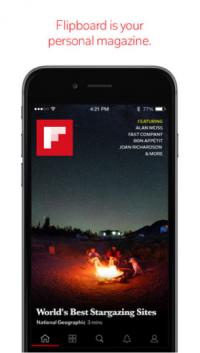
Flipboard is considered a leader in the market and recently bolstered its product offering and user base by acquiring Zite from CNN on March 5, 2014.
Mike McCue co-founded Flipboard in 2010 with Evan Doll, former senior engineer at Apple, and serves as its CEO. He has two prior successful ventures and exits: Tellme Networks Inc., acquired by Microsoft in 2007 for $800 million, and Paper Software, acquired by Netscape in 1996 for $20 million.
Flipboard’s mission is to “let people discover and share content in beautiful, simple and meaningful ways.” It does so by providing a unique Web and mobile app interface that allows users to flip through articles within 17 content topics such as news, business and sports. After featuring a finite number of articles, the interface then offers in-depth topical magazines curated by other users that may be of interest to the reader.
According to App Annie, Flipboard has been in the top 20 in news apps in Apple’s U.S. App Store since the company started tracking data in 2012 and the top 10 for nearly all of 2015.
As of July 2014, Flipboard boasted more than 100 million active readers and adds 250,000 to 300,000 users every day. According to a Wall Street Journal article, Flipboard has “65 million monthly active users in May, up from 50 million in February.” I assume that “active reader” versus “monthly active users” signals the significant difference in numbers.
The company touts direct partnerships with more than 8,000 publishers and offers 24 localized editions worldwide. It was valued at $800 million during its last financing round of $50 million in 2013. In total it has raised $160 million in funding from investors. They are currently in multiple acquisition talks with Twitter, Google and Yahoo, among others. No news has surfaced on strong offers.
Publisher integration work has come with varied success: In 2012 Wired and The New Yorker pulled out from Flipboard offering only limited portions of its content for fear of audience cannibalism. “If digital consumers want to interact with Wired, they can do so at Wired.com and not through an intermediary,” said Wired publisher Howard Mittman. Around the same time, The New York Times agreed to display the entirety of its content within Flipboard’s UX but only if users prove they are paid subscribers. In 2014, The Wall Street Journal and Financial Times also decided to integrate their content up until consumption hits their paywalls.
My take: Flipboard is a clear leader in this space and has done a lot of things right — from the flip-and-read UX to user-generated topical magazines — turning otherwise passive readers into activated curators. My main complaint is there’s no way to customize the articles, topics or sources in its UX. For example, in the cover stories section I was offered seven articles from five sources (NBC News, al Jazeera, AP, The Telegraph and The Guardian), but no way to indicate which sources I did or did not like to customize my experience. Zite was great at providing this customization and I see the beginning of this integration with Flipboard’s keyword recommendation tool.

Comments